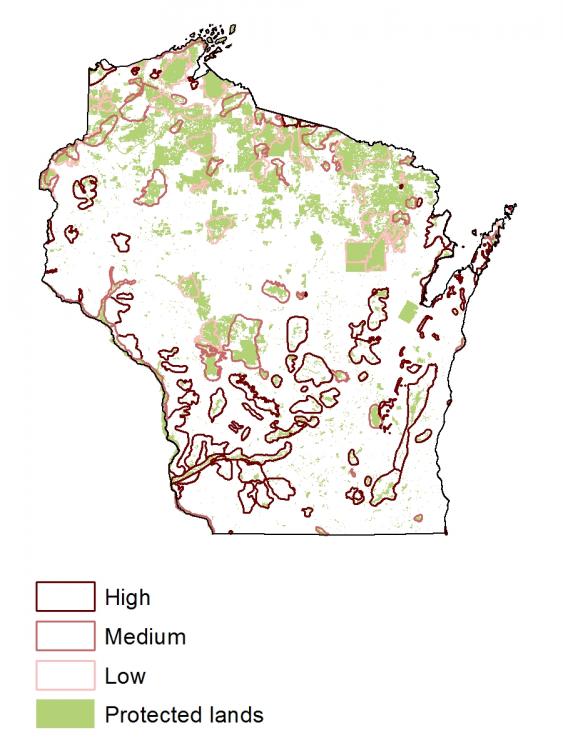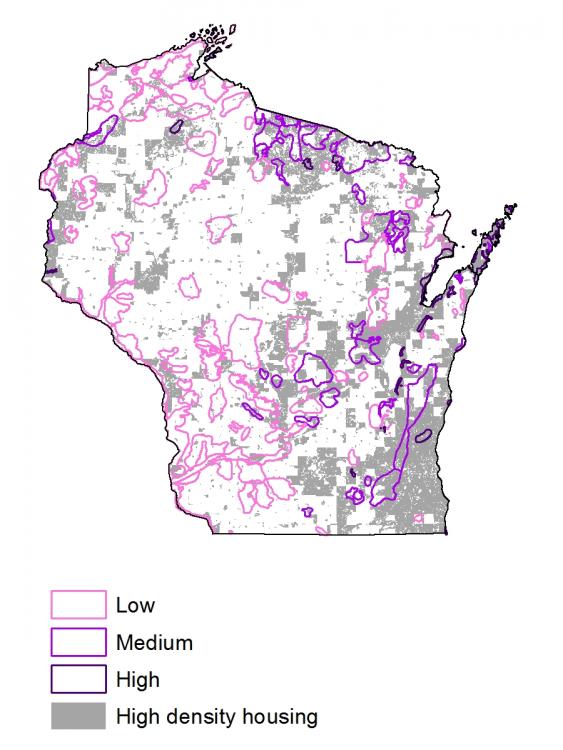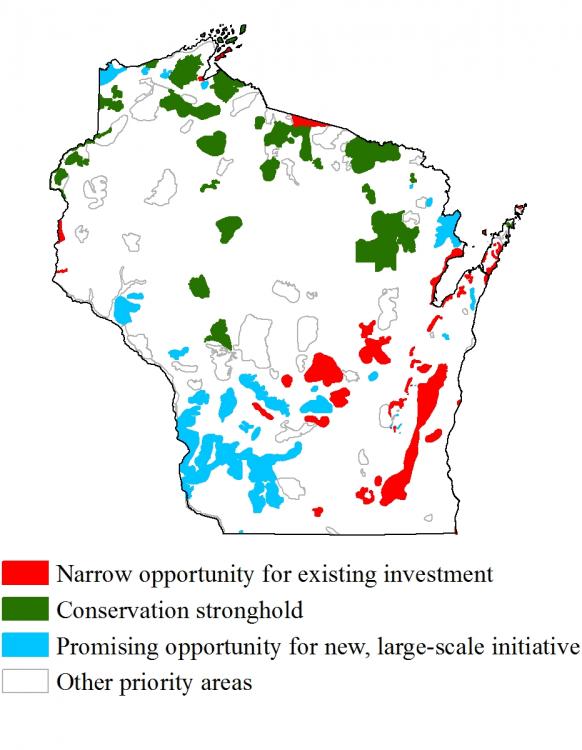Posted 02/25/13
Conservation plans are great in terms of identifying biologically important sites, often large numbers of them, but often do not consider how threatened each of these sites is. Trying to stretch limited resources across many sites makes it difficult to achieve conservation goals in any one site. Sarah's work takes the next step - identifying, from this large pool of biologically important sites - where action is needed first.
Natural resource agencies and conservation organizations commonly develop plans to identify future conservation needs and priorities. However, many of these plans take into account only physical and biological properties of the landscape. This excludes a key consideration: the specific actions and processes that threaten the species and habitats we are trying to conserve. Plans that do not consider threats may identify many sites that are biologically valuable, but fail to highlight specific locations where conservation action is most urgently needed – sites where high biodiversity and high threat intersect.Housing development is a major threat to ecosystems in Wisconsin, as it is a major cause of habitat loss, fragmentation, and degradation. Housing development also often goes hand-in-hand with a number of other threats: increased noise, lighting, roads, human disturbance, predation from pets, and invasive species. This is why Sarah is using data on housing development to help agencies and conservation organizations target and schedule future conservation actions.


Sarah’s work brings together three key pieces of information: 1) existing conservation plans that agencies and organizations have already developed, 2) projections of where housing growth is most likely to occur, and how fast that growth will be, and 3) data on how vulnerable individual priority areas are to future housing development.

As a case study, Sarah looked first at Wisconsin’s Wildlife Action Plan, one of the suite of plans developed across the nation in 2005 to help target and coordinate conservation efforts to prevent future declines in wildlife populations.Using this approach, Sarah has shown that more than half of priority areas identified in Wisconsin’s Wildlife Action Plan are highly vulnerable to threat (Figure 1), and over 40% are already threatened by housing development (Figure 2). Priority areas in the Wildlife Action Plan exposed to differing levels of threat from current high density housing (high density housing is defined as greater than 1 housing unit per 40 acres of land).Sarah hopes that this work will help agencies, land trusts, and other conservation organizations in Wisconsin and elsewhere to be more strategic in their work by highlighting where we have very short windows of opportunity to protect key resources, where we have likely already achieved conservation success, and where lower development pressure will likely provide the longer time frame needed for new, large-scale conservation initiatives to be successful.”
Story by Carlos Ramirez Reyes
